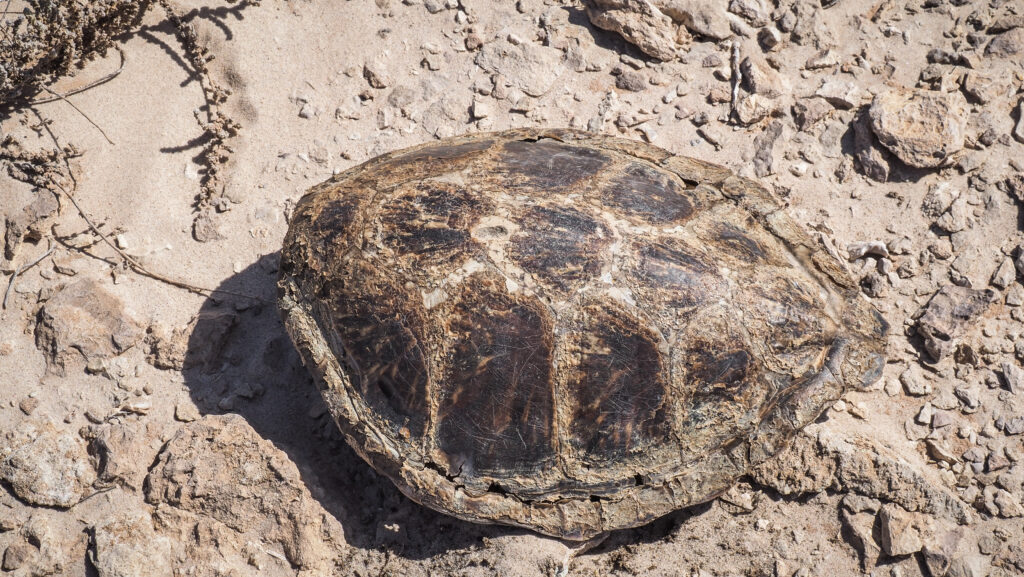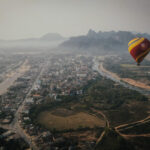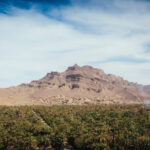Dakhla, located on a narrow peninsula in the Western Sahara region, is a unique and increasingly popular travel destination. Its lagoon is especially famous among water sports enthusiasts, who come over to practice mostly kitesurfing and windsurfing.
Dakhla has a rich history influenced by various cultures, including Berber, Arabic, and Spanish. It was previously known as Villa Cisneros during Spanish colonial rule. Today, the town retains a mix of Moroccan and Sahrawi cultures, with traditional music, crafts, and cuisine being important aspects of daily life.
The area around Dakhla has been inhabited for thousands of years, primarily by Berber tribes. In ancient times, it was part of trans-Saharan trade routes, facilitating exchanges between sub-Saharan Africa, North Africa, and Europe.

In the late 19th century, during the Scramble for Africa, Spain established control over parts of the Western Sahara, including Dakhla. The town was founded in 1884 as Villa Cisneros, named after Francisco Jiménez de Cisneros, a Spanish cardinal. Under Spanish rule, Villa Cisneros became an important administrative and military outpost. The Spanish constructed infrastructure such as roads, buildings, and a military base.
After World War II, anti-colonial movements gained momentum across Africa. In Western Sahara, resistance against Spanish rule began to intensify. By the mid-20th century, Spain faced increasing pressure to decolonize. In 1975, following the Madrid Accords, Spain agreed to withdraw from Western Sahara, transferring administrative control to Morocco and Mauritania.

The withdrawal of Spain led to a conflict involving Morocco, Mauritania, and the Polisario Front, which seeks independence for Western Sahara. Mauritania withdrew in 1979, leaving Morocco in control of Dakhla and most of Western Sahara. A ceasefire was brokered by the United Nations in 1991, but the political status of Western Sahara remains unresolved. Dakhla is currently administered by Morocco, which considers it part of its southern provinces.
Today, the Moroccan Western Sahara Wall or the Berm, which is approximately 2,700 km long, runs south to north through Western Sahara and the southwestern portion of Morocco. It separates the Moroccan-controlled areas on the west from the Polisario-controlled areas on the east.
How to get there?
To get to Laayoune in Western Sahara, you typically have a few options:
By Air: You can fly to Dakhla Airport with Royal Air Maroc from major cities, such as Casablanca or Marrakech.
By Road: The roads are generally well-maintained, but it’s a long journey, so be prepared for a drive of several hours or more depending on your starting point. If you are looking for a rental car in Agadir, I recommend using the service of Click’n’Go Car Rental. They are very friendly guys and easy to contact on WhatsApp. I ended up renting a Renault Clio for the whole month and got a nice price.
By Bus: Supratours and CTM are two popular bus companies operating in Morocco.
You may also check your connections at 12go.com.

The best time to visit
The best time to visit Western Sahara is during the spring (March to May) and fall (September to November) when the weather is mild and pleasant. Summer can be quite hot, while winter brings cooler but enjoyable temperatures. Choosing spring or fall ensures a comfortable climate for enjoying nearby beaches and exploring the city and its surroundings.

Where to stay?
Karam City Hotel is an excellent choice. It is very well located in the city centre, close to shops, restaurants and waterfront. It has very good internet for remote work and a tasty breakfast that you can purchase additionally.
How long to stay there?
One full day in Dakhla is enough to walk around the town and try seafood. Count in extra days in case you want to practice windsurfing or kitesurfing which are extremely popular in the bay or venture out of town to the desert.

How to get around?
The city centre of Dakhla can be easily explored on foot, but to reach sights out of it, you will need your wheels. I rented a Dacia Duster for 2 days from Baie Car. I got in touch with them on WhatsApp and the car was delivered straight to my hotel. The price was 900 MAD for 2 days. Perfect experience!
Once driving, don’t forget your passport as you may encounter frequent police checkpoints.

What to do in Dakhla?
The city center of Dakhla is not particularly nice to walk around but there are a few sights worth checking out. Several mosques serve the Muslim population: Grande Mosquée de Dakhla, Mosquée Eddarham, Mosquée du Quartier Al-Ghofrane and Mosquée Albir.
Catholic temple is present too – Iglesia de Nuestra Señora del Carmen. A small group of priests, who alternate between this church and the Cathedral of St. Francis of Assisi in Laayoune, oversee the temple. Spanish settlers constructed it for what is sometimes referred to as the Spanish Church. Nearby is a quiet park with a fountain.


The other three sights are located on the outskirts of town, so you will need to take a short taxi ride to get there. Don’t forget to negotiate the price!
Faro de Dakhla is a lighthouse dating back to the Spanish colonial era. The lighthouse is a popular spot for sunset viewing and fishing with a beautiful view of the Atlantic Ocean.

La Sarga is a fishing village located about 15 km south of Dakhla, at the end of the peninsula. There are hundreds of fishing boats there that are towed to and from the sea by tractors. The working conditions of the fishermen are harsh and the poor housing is eye-opening. The people are friendly although the amount of rubbish all around is overwhelming and depressing view.



Oum El Bouir is a relatively nice sandy beach which is the nearest one to Dakhla city centre.
What to do out of town?
The whole peninsula is famous among water sports enthusiasts and you will see plenty of shops or resorts offering courses of kitesurfing or windsurfing. It’s an excellent place to learn new sports or improve your skills.
Trouke 25 Beach is a good spot to chill with the view of Dragon Island and big parking with plenty of campervans. It is possible to walk all the way to the island during low tide but be careful and check the tide times before you set off as you don’t want to be stuck on the island overnight. Fishermen come over here to collect various seafood from the seabed.

The White Dune is probably the most popular natural tourist attraction in Dakhla and can be seen in every travel brochure. It is reachable by 4WD through a dirt road cutting across the desert, but if you are ready to walk, you can get there even without 4WD as I did.
From the main road, turn right into a dirt road leading to Paraiso Dakhla Hotel. Drive as far as you can and then simply park the car on the roadside and continue on foot. You may want to use the mobile app MapyCZ for navigation as it shows all the paths in that area. It is possible to turn the hike into a pretty long loop, going back to the car through a desert and not along the coast. Don’t forget the water!
At low tide and from the distance, the White Dune looks like an island. First, I climbed it and then went down again to take some pictures from a different perspective. It was windy but absolutely breathtaking!





Portorico Beach is a beautiful place, with a huge bay and a desert that falls directly into the sea. It was so windy that I ended up with sand all over my face. The way down there is a bit bumpy but doable in 2WD with higher clearance. There is a military post but the guards were friendly and greeted me with smiles.


The Tropic of Cancer passes through eight countries in Africa, namely Egypt, Libya, Chad, Niger, Algeria, Mali, Mauritania and Western Sahara. You will spot an information board about 5 kilometres south from the turn-off to Portorico Beach.

Imlili Desert was definitely a highlight of my trip. I turned left from the main road, about 55 kilometres south of the Dakhla Roundabout. The target was to reach Imlili Sebkha which is a salt flat with over 160 permanent holes of hypersaline water containing fish. Unfortunately, the pools are not signposted and I wouldn’t risk going there without 4X4.
For the first few kilometres, the road was in excellent condition but then the asphalt finished and I hit the dirt. It was possible to continue further until I reached a very sandy section. I didn’t pass any other cars on the way there and when I looked around I didn’t see anyone either. As my car wasn’t 4X4, I decided not to try my luck. I parked Duster on the roadside and continued on foot to the nearby hill.
The panorama of the Imlili Desert was magnificent even though it was very windy. I felt some regret that I couldn’t continue driving further but I knew that turning back was the only sensible thing to do. I didn’t even have a mobile signal!
As the alternative to self-driving, the Imlili Desert can be visited as a part of an organized 4X4 tour, however, it won’t be cheap. Ask about it at your accommodation in Dakhla and they will provide you with the latest offers and prices.


If you continue further south towards the border with Mauretania, you will pass Imlili Town and most probably another police patrol. A police officer asked me where I was heading but luckily a very simple answer that I was just sightseeing and driving around satisfied him. About 7 kilometres after Imlili, watch out for a turn off to the right, into an asphalt road. It goes to Candelaria Beach which is another secluded place with a small military camp. Soon after the turn-off, on your left you will spot huge salt flats, so don’t hesitate to park the car at the roadside and walk around to take some pictures. On the right, you can climb the dunes for the magnificent ocean view.



Candelaria Beach was the southernmost point that I visited in Western Sahara. I saw plenty of tourists travelling towards the border with Mauretania in their campervans and it was tempting to do the same, even by hitchhiking. Hopefully one day I will be able to get to that country too!



